
Blue is light seen through a veil.
~ Henry David Thoreau ~
I have tens of thousands of photos in my files, the vast majority flowers. They are often of the same flowers, taken in different years and at different places. So, the numbers don’t reflect the number of species. Even so, of all those thousands, there is a lot of variety. Of them all, I found 13 blue flowers that are not — or at least barely — leaning toward lavender or purple.
They are so rare that I remember taking the photo below, thinking it was the only navy blue flower I’d ever seen. It’s estimated that only 10% of the 200,000 flowering angiosperms on Earth bloom blue. But, though there are certainly more than in my collection, in my experience wandering the North American continent, that percentage is high.
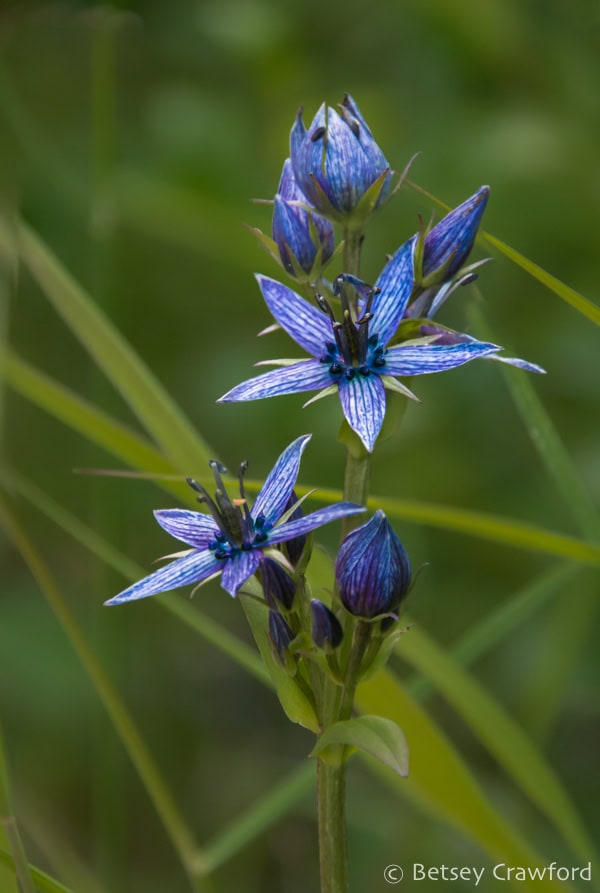
More people worldwide, by a range of 8-18% ahead of their second choice, claim blue as their favorite color. Yet there is very little blue pigment in nature. We see the sky as blue because the white light from the sun passes through water molecules. They scatter the blue wavelengths, making them visible to us. Bodies of water are blue because they reflect the sky.
There are only a scant handful of blue minerals, like sapphires and lapis lazuli. While there are a few blue fish and amphibians, there are no blue mammals; the blue whale is gray.
The blue of butterflies and birds is not a pigment but structural components of feathers and wings that reflect blue wavelengths. The same is true of blue eyes. Only one butterfly genus, the Nesseae, has an actual blue pigment called pterobilin in the scales of its wings.
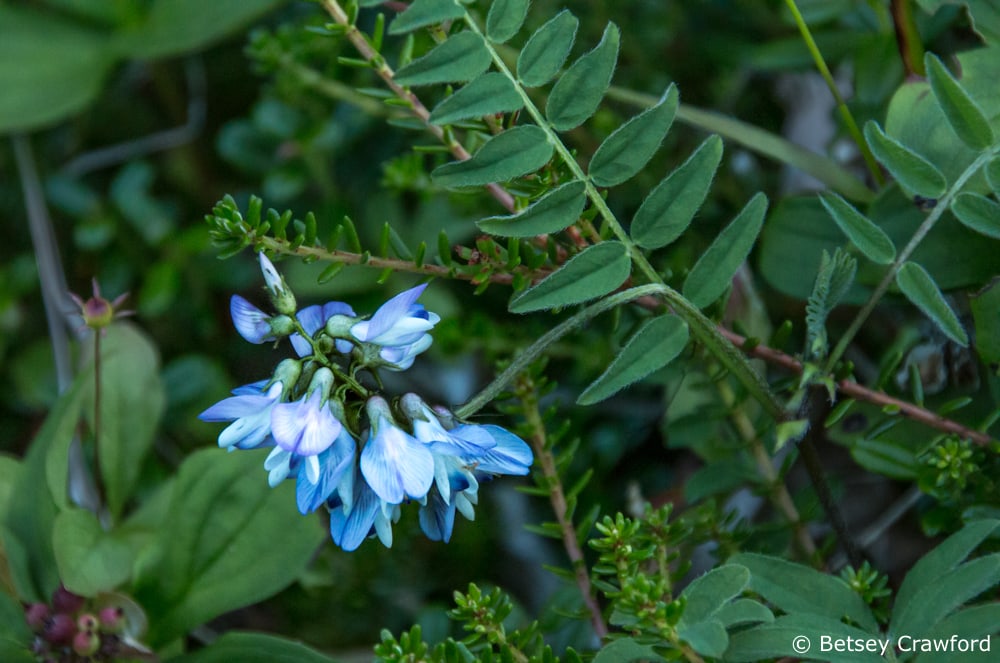
The blue in flowers is caused, as are all flower colors, by flavonoids, the chemicals that make plants so good for us. Yellows, oranges, and bright reds are caused by astaxanthins and carotenoids. Anthocyanins cause purples, lavenders, and bluer reds. The particular anthocyanin that causes purple and blue is delphinidin.
The trouble, from a blue lover’s perspective, is that delphinidin wants to be purple. An eggplant skin, for example, is loaded with it. To go toward blue, it needs to blend with other flavonoids, polyphenols, or organic acids as co-pigments. Some blues result from the fusion of delphinidin and various metal ions. A few are affected by the acidity of the soil.
Besides fiddling around with the color ranges of delphinidin, a blue-flowering plant has to absorb the purple-causing red wavelengths of light. These are long and slow, producing very little energy. The molecules capable of absorbing small amounts of energy are, perhaps unexpectedly, big and complicated to produce.

The more chemistry it takes a plant to do anything, the more energy it requires. So it’s much easier for delphinidin petals to stay purple. Perhaps the real mystery is why the few bother to turn blue if it’s so much trouble.
Adding to the intrigue, blue flowers appear more frequently in harsh conditions, like the Himalayas. Places where you would assume plants wouldn’t use energy frivolously. So there has to be a good reason, most likely associated with pollination, to do all that work in a difficult climate.
Studies have shown that when plants are pollinated abiotically — without bees or other animals — they produce no blue petals at all. So the assumption is that blue, like other colors, evolved to help lure pollinators, perhaps specific ones.
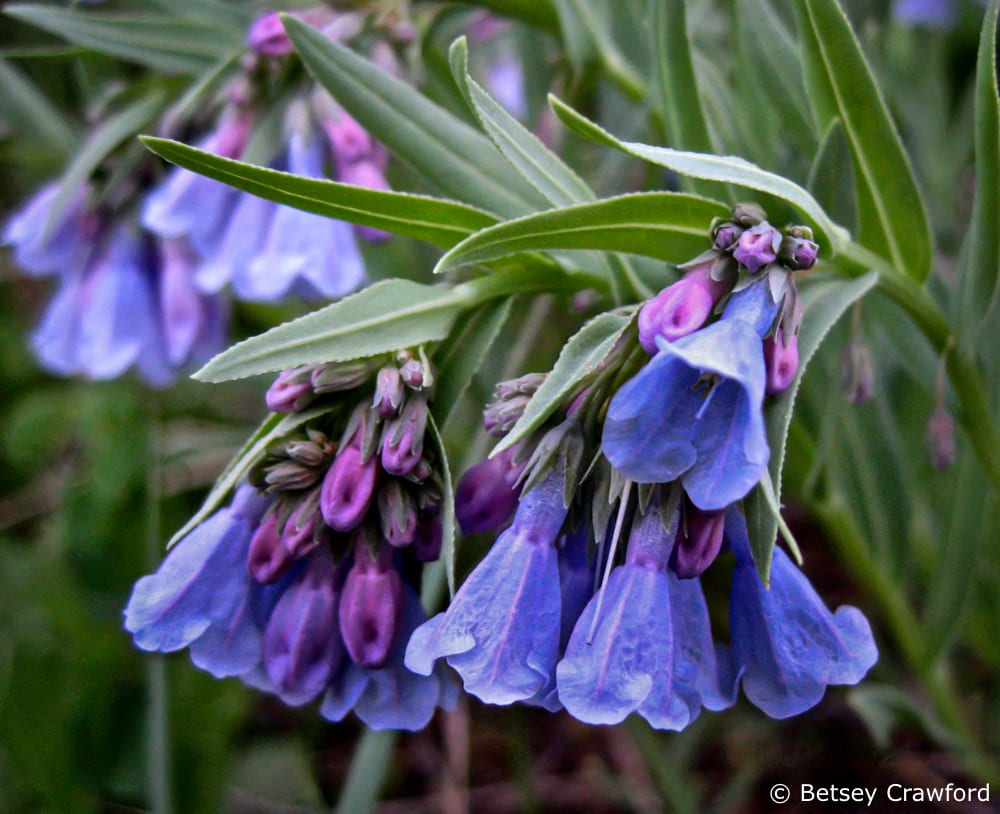
Bees preferentially see in the ultraviolet range, which tends to turn even yellow flowers cooler and toward purple. So, it seems likely that blue petals would be useful in appealing to the scarce bees in extreme habitats. But that doesn’t help explain the rare blue flowers in moderate, bee-friendly climates. Studies dealing with color in flowers frequently end with the words “more research is needed.”
All those blue lovers around the world long for blue flowers. And there are some garden varieties available, sometimes sporadically. Last year my balcony hosted vivid blue morning glories and a cobalt blue salvia to match. But this year I had no luck finding a healthy version of either.
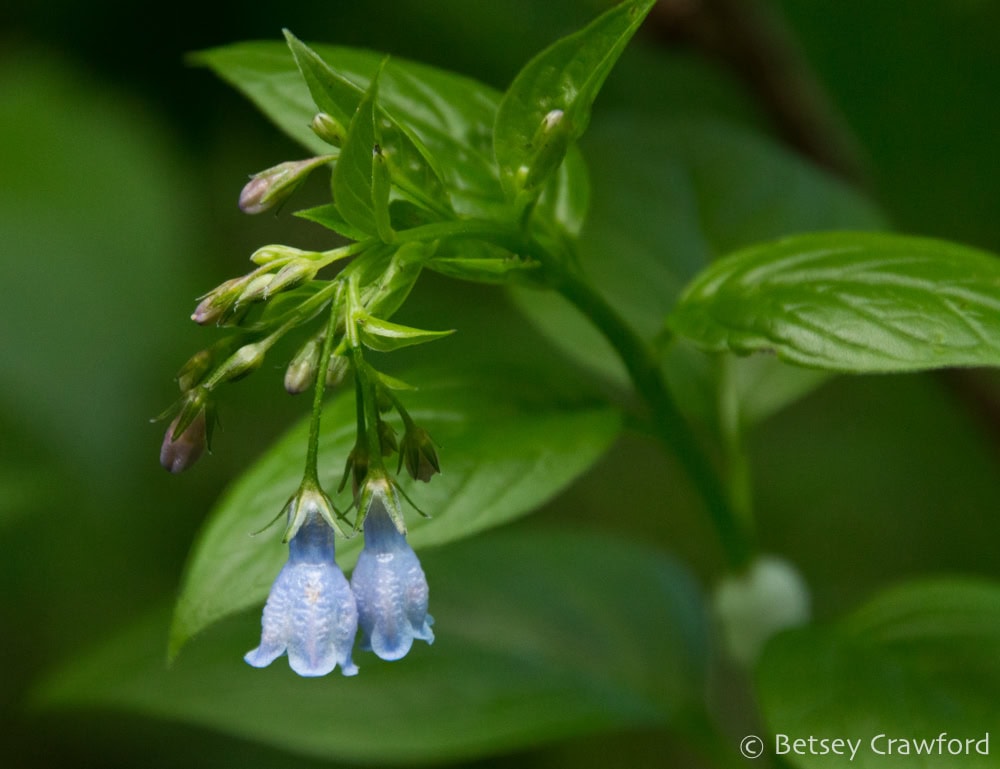
Scientists in Japan, a country that reveres the chrysanthemum, have created a blue one through genetic modification. But the process was complex enough to quash any plans to produce it commercially. In photos, it’s not, to my eyes, the luminous blue we all yearn for. This is also true of the only rose claiming to be blue. It’s a dull lavender.
“We treat desire as a problem to be solved,” wrote essayist Rebecca Solnit in contemplating the alluring blue of distant landscapes. A blue that disappears as we get closer. She suggests we treat yearning as a state to be cherished. Perhaps treasuring the few blue flowers we have is enough, even as we cherish our yearning for more. Perhaps the mystery itself is enough.
It may have to be. It’s possible that we will never settle on an explanation. I once told my son, years ago, that I didn’t understand why he had done something I no longer remember. But I do remember his answer, when he said, with a teen-truculent calm, “You don’t need to understand everything.”

I found this moment of Zen so fascinating it’s still with me. We live in a culture where our major institutions — school, church, science, medicine — are dedicated to understanding things. Answers and explanations are comforting in a world of flux and uncertainty. And exciting for the curious. I love to understand, to know why and how things happen.
But I also agree with Albert Einstein that “the most beautiful thing we can experience is the mysterious.” So if we are never clear on why blue is so rare, I won’t be unhappy. It’s one of those reminders that there is more to life than we yet know, and may ever know.
A hint that there may be many things we haven’t evolved to even apprehend. Things happening all around us — like the dark matter filling space — that our senses don’t pick up. Very intriguing and perhaps a little spooky.
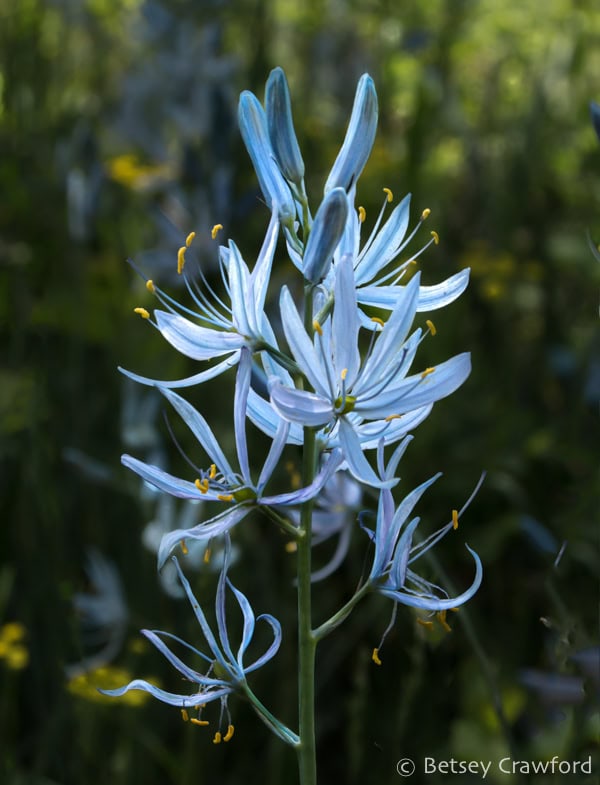
~ RELATED POSTS ~
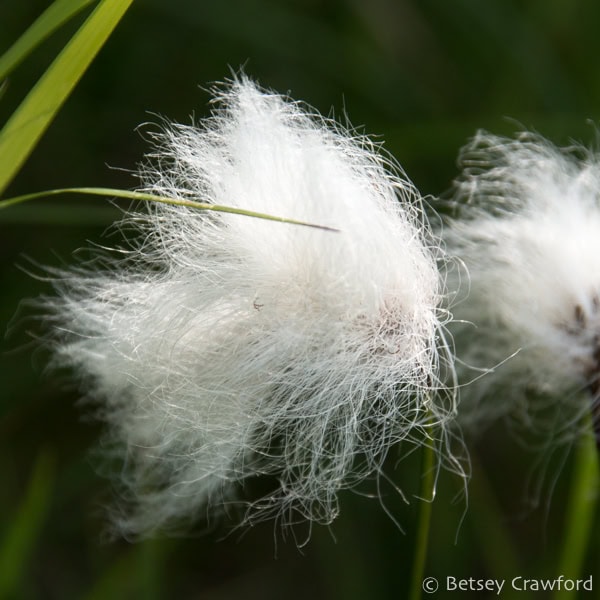
When I thought of the title for this Halloween post, I had white flowers that have ghostly or skeletal effects in mind. But the more I thought about them, the more questions I had. It turns out that white flowers are full of mystery.

Every living thing on our planet depends on webs that can communicate, transport, find their way. That can overcome problems. negotiate with other beings, sort through options. That know what is happening over their vast networks.

BIOMIMICRY: DESIGNING WITH NATURE’S 3.8 BILLION YEARS OF RESEARCH
The kingfisher’s eyelid grabbed me. A dam’s changing water levels caused erosion. Designers asked nature how she would solve the problem. Her answer? Spider webbing and a diving bird’s third eyelid. Nature has been at this a long time and has surrounded us with geniuses.
thanks from a deeptime admirer
You’re so welcome!
Loved this mystery! Thanks!
Is vipers bug-loss truly blue?
So good to see you on the Deeptime course!